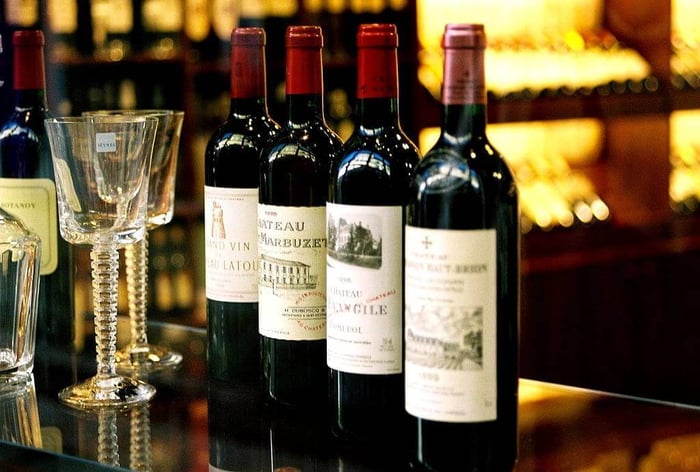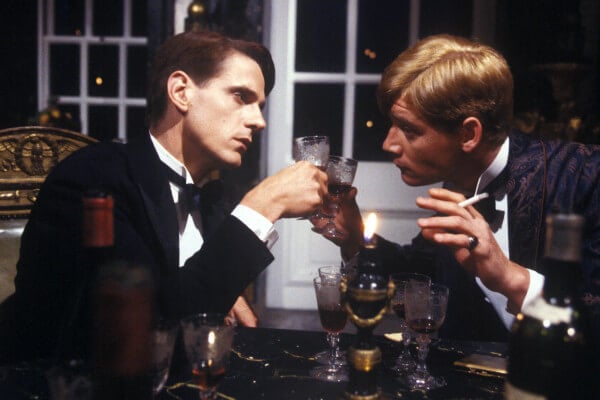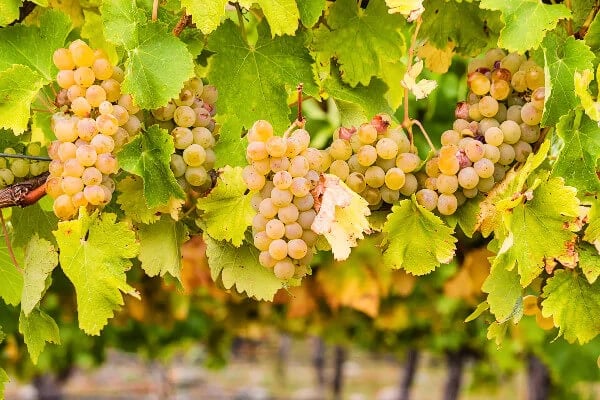
What is Claret? A Guide to Bordeaux's Red Wines
Table of Contents
What is claret? Maybe the word conjures up images of stuffy oak-paneled Edwardian dining rooms, with even stuffier people in evening dress making polite conversation, while an ancient butler with an unsteady hand carefully pours a rich red wine from decanter to cut crystal.
If that is how you answer the question, "what is claret", I’m going to try to change your mind. Claret wines can be traditional, but they can also be highly accessible, and interesting.
Read on to learn how you can spot an excellent bottle or two for a very affordable price.
Buy claret wines drinking well now
Chateau des Demoiselles Claret 2015, Castillon Côtes de Bordeaux

£15.75
This blend of Merlot and Cabernet Sauvignon from Vignobles Ducourt is aged for 12 months prior to bottling. On the nose there are delicate red...… read more
Image is one reason why red wines from the Bordeaux region have had a bit of a tough time in recent years. Another has been the growing preference for varietals. Most people know whether they prefer a Malbec, Merlot or Cabernet Sauvignon.
Claret seems mysterious. For me, that’s part of the appeal. But it’s also a problem. In their efforts to preserve tradition there’s a risk that the winemakers of Bordeaux are also putting barriers in the way of modern wine lovers.
The pleasure for me is that there are so many styles and characteristics to enjoy - all from a single region. Best of all - you don’t need to be an expert to find something delicious. So it’s worth making a bit of effort. Come with me on a journey to discover what is claret.
 What is Claret?
What is Claret?What is claret?
Claret is a broad brush term for any red wine from the area around Bordeaux in south west France. The wines are blended from several different varieties of grape, and there is a range of soil types and growing conditions.
The most exclusive chateaux sell wines that cost thousands of pounds for a single bottle. But there is also plenty of choice between ten and twenty pounds for those of us who don’t work for hedge funds.
The region we are talking about spans around 50km inland from Bordeaux and out towards the sea following the route of the Gironde, formed by the confluence of the Dordogne and Garonne rivers. It takes in some of the most famous names of the wine world including Paulliac, Médoc, Margaux, Pomerol, Graves and the truly delightful tourist trap that is Saint-Émilion (go if you get the chance).
 Vineyards of Saint Emillion
Vineyards of Saint Emillion
Permitted grapes are Cabernet Sauvignon, Cabernet Franc, Merlot, Petit Verdot, Malbec, and Carménère (which is rarely used today).
In July 2019, Marselan, Touriga Nacional, Castets, and Arinarnoa were added to the list. The dominant grape (depending on the sub-region) is usually either Cabernet Sauvignon or Merlot.
In the Médoc and the rest of the left bank of the Gironde estuary, Cabernet Sauvignon dominates, often blended with Cabernet Franc and Merlot. These three grapes in a 70-15-15 ratio is a typical 'Bordeaux blend'.
Merlot is predominant in Saint-Émilion, Pomerol and elsewhere on the right bank. A typical blend here would be 70% Merlot, 15% Cabernet Franc, and 15% Cabernet Sauvignon.
Younger winemakers will argue that blending proportions do not answer the question 'what is claret'. They are mixing things up a bit, using, for example, higher percentages of Malbec. This brings a bit more variety and appeal without departing too far from the classic experience of what is claret.
Château Bechereau 2022, Lalande de Pomerol

£21.50
A family business since the 18th Century, Château Béchereau has vineyards on three appellations of the "Right Bank" in the area of the Libourne vineyards....… read more
Why is wine from Bordeaux called claret?
Claret is an English term. Most people think the name comes from their deep red colour.
It turns out this isn’t so.
In medieval times the Aquitaine territory around Bordeaux was frequently in English hands. The wine trade with England flourished. But it wasn’t much like the wines we enjoy today. Most of the wine grown around Bordeaux at the time was light coloured and light bodied - almost like a rosé. Possibly derived from ‘liquet,’ the latin for clear, these light coloured wines became known as clairet.
The wines took on the richer and deeper characteristics we expect today after many English people discovered and developed a preference for fuller bodied wines from Portugal, where they had a welcome tradition of not periodically waging war against us. The Bordeaux winemakers adapted to changing tastes and this new market reality.
What does Claret taste like?
The basic Bordeaux AOC wines are intended to be drunk when young. There’s not too much oak and quite a bit of fruit. Generally, these are quite easy drinking and can be happily drunk chilled in the summer.
Slightly more select are the Bordeaux Superieur AOC wines, where production controls are stricter and the wines are often oak-aged. This can be a good place to look for enjoyable wines at a reasonable price.
In recent times there has been significant investment by winemakers to help fight off international competition. As a result the 'Superieur' designation these days guarantees something more than the fact that it will cost more.
 The appellations of Bordeaux
The appellations of Bordeaux
Côtes de Bordeaux is a further step up the quality ladder, where you can find delicious clarets at an affordable price. The style (and possibly quality) lie between the basic Bordeaux wines and the more select appellations.
Côtes de Bourg, Côtes de Blaye, Côtes de Castillon and Côtes de Francs usually indicate a wine that will have plenty of complexity and age well. But you won’t be hit with the premium price that comes with a famous chateau name.
East of Bordeaux lies the city of Libourne. Its ten appellations include the villages of Saint-Émilion and Pomerol. Here they produce wines dominated by Merlot. Wines from this area usually have a high fruit concentration and softer tannins.
North and south of the city of Bordeaux lie Graves and Médoc - the classic areas that produce wines dominated by Cabernet Sauvignon. The tannins are heavier and the wines are concentrated, reflecting the fact that they are often intended for cellar-ageing.
What do Bordeaux classifications mean?
This is where it can get a bit geeky - but bear with me because some of it is helpful when it comes to choosing a wine you’ll enjoy.
Back in 1855 the Médoc chateaux were classified into five 'growths' based on their price and quality. The only chateau from outside Médoc included was Chateau Haut Brion. By and large, these classifications are still in place today and still used as a guide by buyers of fine wines.
 Chateau Haut Brion, classed growth
Chateau Haut Brion, classed growth
How relevant are classifications produced over 150 years ago? You might well ask. Some chateaux have disappeared or merged and some really belong in a different category. But change in the fine wine world often has a hell of a fight on its hands when it encounters tradition down a dark alley.
There are many estates in appellations outside of Médoc that would deserve inclusion, certainly as fifth growths. These include vineyards on the Côtes de Bordeaux I talked about earlier and Lalande de Pomerol, Fronsac, Canon Fronsac and several examples in the Bordeaux Superieur appellation.
Saint-Émilion has taken a different approach. Its classification system dates from 1955 and is regularly updated. There are four levels: Premier Cru Classé A, Premier Grand Cru Classé B, Grand Cru Classé and Grand Cru.
Premier Grand Cru Classé A comprises 4 chateaux. Grand Cru Classé B includes 15 estates that are allowed to use the wording on their labels. The Grand Cru Classé includes 63 estates.
Again, the system isn’t perfect. And the classifications - surprisingly - aren’t all about the quality of the wine. 'Terroir', for example, makes up 30% of the evaluation for Premier Grand Cru Classé. There is some verbal fisticuffs about whether every wine is in the right classification but it’s still a fairly useful guide.
Even so, it skirts around the issue you and I care about most: what’s the stuff in the bottle like?
The Grand Cru classification basically means that the grower follows the rules and is located in the right place. But don’t let this put you off. A bit of research into producers and vintages can turn up trumps when it comes to finding a memorable wine that won’t devastate your bank balance.
While tradition in Old World wines is incredibly important, the classifications are often just noise when we care more about nose (and taste and price).
Bottom line: use classifications as a rough guide but go by your own taste. And buy from a merchant you trust to have done a thorough job of tasting and quality control - something we’re very much into at Wickhams.
If it’s on our website you can be sure that it’s something any of us would be more than happy to drink ourselves - and do!
Château Buisson-Redon 2021, Bordeaux

£12.15
Good, honest right-bank claret. Proper Bordeaux with dark berry aromas and pleasant cinnamon and nutmeg spice. The palate is medium-bodied and structured with round, warm...… read more
Should I lay claret down
A lot of claret is bought, not for immediate drinking, but for laying down. For up-market examples, cellaring is almost essential to allow the wine to mature to its full splendour. As a general rule, the better the wine the longer you should leave it before drinking - that’s if you can provide the right conditions (dark, cool and a stable temperature).
 Claret ageing in the cellar
Claret ageing in the cellar
Basic clarets will keep happily for a couple of years. After that they are unlikely to improve and will probably start to deteriorate. For most ‘good’ clarets five to ten years seems to be the optimum period. The heavier tannins in the classic Médoc growths generally make them better candidates for longer-term cellaring.
At the top end, wines can be laid down for very many years. Some are never opened at all because they are an investment.
Should I decant claret?
That sound you hear is a can of worms being opened. There are almost as many opinions on when or whether to decant as there are people with opinions.
First, let’s start with why you would want to bother in the first place. Decanting has two functions: to separate the wine from any sediment in the bottle (this is why it’s done carefully), and to aerate the wine. Oxygen changes the characteristics of the wine, typically softening the edges of any harsh tannins.
But too much oxygen too quickly can cause some wines to ‘collapse.’ This is why you’ll see a lot of debate about whether to decant well before serving or immediately before.
The reality is that most clarets will be improved by decanting, even though sediment is not something you’ll encounter in your average bottle of modern Bordeaux. For an AOC I wouldn’t bother and for a Superieur or Côtes I’d only do it immediately before serving.
For more exclusive Crus and older wines I’d maybe decant half an hour or so before serving. Experiment and see what works for you.
Château Lilian Ladouys 2019, Saint-Estèphe

£34.00
A powerful Cru Bourgeois with an abundance of tart cherry, blueberry notes, and a reassuring firmness on the palate. Quite muscular in style with good...… read more
What is claret best paired with?
The answer to this question is probably more varied than you think - a bit like claret, really. The standard pairings are red meat, game, hard and mature cheeses and charcuterie. But lighter examples go surprisingly well with white meat and even fish - particularly the oily fish like salmon and tuna.
A Bordeaux AOC or Bordeaux Supérieur would also be a good accompaniment to a barbecue. Usual advice though - do whatever you think tastes good and whatever makes you happy.
I hope this has helped to answer the question, "what is claret" and cleared away some of the mystery that the Bordeaux wine trade has scattered in your path - getting in the way of actually buying some of their wine.
Take it from me, the journey to better understand what is claret is one well worth embarking upon!




